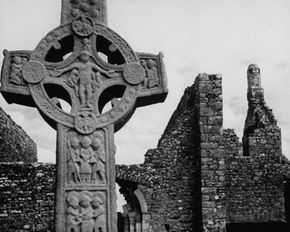Celtic Roots: Samhain
Most of the traditions of Halloween date back to Samhain (sow-en), the ancient Celtic New Year. Samhain, which translates to "end of summer," occurred around the end of October, when the weather started to get cold. At its heart, Samhain was an observance of all the important things that were happening during this change of seasons.
Advertisement
The Celtic people, who came together as a society around 800 B.C., kept sheep and cattle. When the weather got colder, the shepherds brought their animals down from the hills to closer pastures. This shift changed daily life significantly. In the winter months, everybody stayed inside or close to home, working on handcrafts and spending time together. Samhain also marked the final harvest of the year, an event commemorated by festivals in many cultures.
Celtic tradition held that turning points, times when things change from one state to another, had magical properties. Samhain marked the biggest turning point of the year — a change in the weather as well as a shift in everybody's lives. The Celts believed this magical time opened up a sort of connection to the dead. Those souls that had passed through the ultimate turning point, the shift from life to death. They believed the world of the living was closest to the world of the dead at the time of Samhain, and that the spirits of the dead traveled again among the living. A lot of the activities of the Samhain festival were connected to this belief, and many of those practices evolved into modern-day Halloween traditions.
The Celts recorded their history orally — they did not write anything down, but passed on beliefs and stories from person to person. For this reason, historians often disagree about the Celts' practices and beliefs. So nobody is really sure what the Samhain festival was like, but there are a number of accounts that provide interesting explanations of modern-day Halloween practices, as we'll see in later sections.
